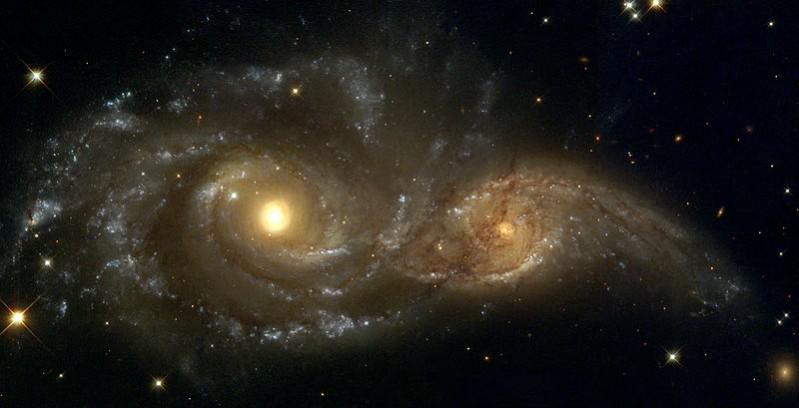
The Milky Way Galaxy had a head-on collision in its early years of formation with a smaller star cluster that left our galaxy disfigured. Its effects were so dramatic that it can be seen even today.
Called the Sausage galaxy, the object had a head-on collision with the Milky Way about 10 billion years ago, says a report. The galaxy that crashed into the Milky Way did not survive the collision and its remains got scattered all over the galaxy. The debris is still visible to this day.
The force of the collision ripped the sausage galaxy into shreds, says one of the authors of the study.
It left its stars moving in radial orbits through the Milky Way, and these orbits are long and narrow like needles, said Vasily Belokurov of the University of Cambridge and the Center for Computational Astrophysics at the Flatiron Institute in New York City. The paths taken by stars move them very close to the centre of the Milky Way, and this is a sign that the incoming galaxy had come in on an "eccentric" orbit.
The study was carried out using data from the European Space Agency's Gaia satellite. The galaxy that died after crashing into the Milky Way has been dubbed the "Gaia Sausage" because of its unusual orbit. The team plotted velocities of stars, and the sausage shape came out to be really prominent. As the smaller galaxy started to break up, its stars were thrown into highly radial orbits and these Sausage stars are the only remnants of the last major merger of the Milky Way, says Wyn Evans of Cambridge University.
The Milky Way continues to crash and merge into nearby galaxies. There is actually one in progress right now with the neighbouring Andromeda Galaxy. It is something that will eventually happen and expected to take about 5 billion years to complete.
The study was first published in the Monthly Notices of the Royal Astronomical Society and The Astrophysical Journal Letters.

















